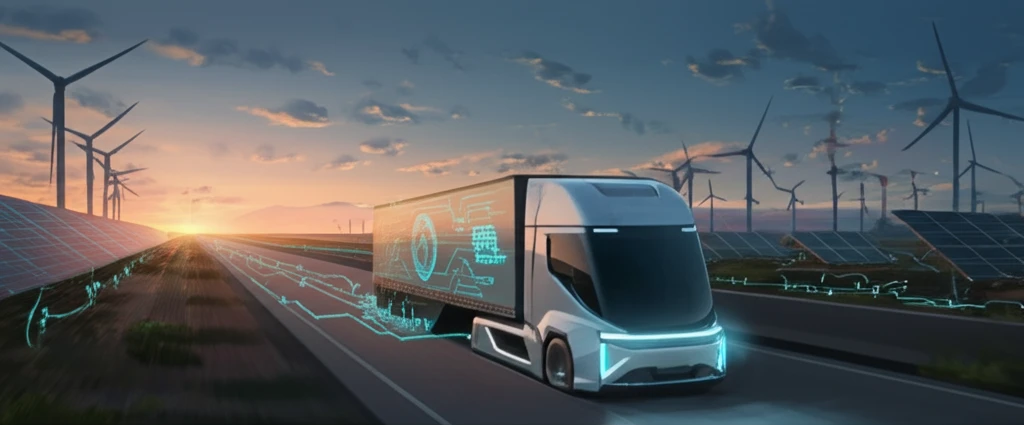
Charging Ahead: How Electric Trucks Can Power a Greener Future (and Save You Money!)
"Discover the surprising impact of battery-electric vehicles on Germany's power grid and how smart charging can lead to significant cost savings and a more sustainable energy future."
The future of transportation is electric, and that includes the big rigs. As the world races towards climate neutrality, transitioning heavy-duty vehicles (HDVs) from fossil fuels to cleaner energy sources is crucial. While battery-electric vehicles (BEVs) have emerged as a frontrunner in the passenger car sector, the path for HDVs is still being paved. Options like electric road systems (ERS), hydrogen fuel cells, and e-fuels are all vying for a place in the future of trucking.
But which of these technologies offers the most sustainable and cost-effective solution? A new study dives deep into the power sector implications of different HDV electrification strategies in Germany, a country known for its ambitious renewable energy goals. By using an open-source capacity expansion model and detailed truck traffic data, researchers have uncovered some surprising insights into the costs, benefits, and potential challenges of electrifying heavy-duty transport.
The results offer a roadmap for policymakers, businesses, and everyday consumers interested in the future of sustainable transportation. From smart charging strategies to the impact on renewable energy sources, this research sheds light on how we can electrify our trucks and create a cleaner, more efficient energy future for everyone.
Electric Trucks: The Key to Reducing Power Sector Costs

The study compared several HDV electrification scenarios, including battery-electric vehicles (BEVs), electric road systems (ERS), fuel-cell hydrogen electric trucks (FCEV), and internal combustion engines powered by e-fuels (ICEV PtL). The findings revealed a clear winner in terms of power sector costs: flexibly charged BEVs, especially those with vehicle-to-grid (V2G) capabilities. These smart trucks, which can both draw power from and supply power back to the grid, incurred the lowest additional power sector costs.
- BEVs with V2G: Lowest additional power sector costs (around €5,600 per vehicle per year).
- Optimally Charged BEVs (without V2G): Slightly higher costs (around €7,200 per vehicle per year).
- Non-Optimally Charged BEVs: Markedly higher costs (around €11,900 per vehicle per year).
- Hydrogen and E-fuels: Significantly higher costs (around €39,700 and €52,700 per vehicle per year, respectively).
The Road Ahead: Smart Investments for a Sustainable Future
The study’s findings send a clear message: direct electrification of heavy-duty vehicles, particularly with smart charging and V2G capabilities, offers the most promising path towards a cost-effective and sustainable transportation future. By prioritizing BEVs and ERS-BEVs, and by implementing policies that encourage flexible charging practices, we can pave the way for a cleaner, more efficient energy system that benefits both the environment and the economy.
